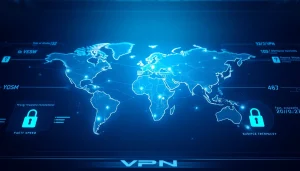Explore Gamification as a Service: The Ultimate Guide to Boosting Engagement in 2025

Understanding Gamification as a Service
Defining Gamification in the Digital Age
In the rapidly evolving landscape of digital engagement, businesses are increasingly turning to innovative strategies to capture and retain the attention of their customers and employees. One such strategy that has gained significant traction is gamification. Essentially, gamification employs game mechanics in non-game contexts to enhance user engagement, drive participation, and encourage desired behaviors. Over the years, the concept has evolved into a form of gamification as a service (GaaS), allowing organizations to seamlessly integrate game elements into their workflows.
The Role of Game Mechanics in Business
At its core, gamification relies on fundamental game mechanics such as point scoring, leaderboards, challenges, rewards, and feedback loops. These elements leverage intrinsic and extrinsic motivators to inspire users to engage more deeply. For instance, a company might implement a point system for completing training modules, thus fostering a culture of achievement and competition among employees. Game mechanics can be tailored to various business needs, whether for improving sales performance, encouraging customer loyalty, or enriching user experiences in educational settings.
Benefits of Gamification as a Service
Implementing gamification as a service provides businesses with numerous advantages. First, it eliminates the need for extensive in-house development, allowing organizations to utilize pre-built platforms that can be customized to their specific requirements. This efficiency not only saves time but also reduces implementation costs. Second, GaaS enhances user engagement significantly as it taps into the natural inclination of people towards competition and acknowledgment. Furthermore, it provides valuable data analytics and insights to track user behavior, allowing businesses to refine their strategies over time.
Common Applications of Gamification
Gamification in Employee Training and Development
One of the most prevalent applications of gamification is within employee training programs. Traditional training methods often lead to disengaged learners, but incorporating gamified elements can transform this experience. For example, companies can utilize game-based learning platforms that present training material through interactive scenarios, quizzes, and rewards. This approach not only makes learning enjoyable but also facilitates better retention of information as employees are motivated to engage fully with the material.
Enhancing Customer Engagement with Gamification
Businesses can also significantly enhance customer engagement through gamification. By integrating game mechanics into customer interactions—such as loyalty programs featuring points, badges, and levels—brands incentivize repeat purchases and customer advocacy. For instance, Starbucks has successfully implemented a rewards program where customers earn stars for each purchase, redeemable for free products. This approach not only boosts customer loyalty but also fosters a deeper emotional connection to the brand.
Gamification in Marketing and Branding Strategies
In marketing, gamification provides a unique edge in capturing the attention of potential customers. By creating interactive campaigns that involve challenges or contests, brands can encourage user participation while simultaneously building their reputation. An example includes brands like Nike, which utilize gamified fitness apps to promote their products. These applications track user performance and reward achievements, leading to increased brand loyalty and community building.
Implementing Gamification as a Service
Choosing the Right Gamification Model for Your Business
Selecting the appropriate gamification model is critical to the success of implementation. Businesses must consider their objectives—whether that is to educate employees, engage customers, or increase productivity—and choose a model that aligns with these goals. Common models include the Points, Badges, and Leaderboard (PBL) model, which emphasizes competition among users, or the Challenge-based model, which focuses on achieving specific tasks or goals.
Steps for Effective Implementation
The implementation of gamification as a service should follow a structured approach:
- Define Objectives: Clearly outline the goals of your gamification strategy.
- Understand Your Audience: Research your target users’ preferences and behavior to tailor the gamified experience.
- Select the Right Platform: Choose a GaaS provider that fits your specific needs and allows for easy integration.
- Design Engaging Content: Create game mechanics that will resonate with users and motivate participation.
- Launch and Promote: Effectively communicate the launch to ensure user buy-in.
- Monitor and Optimize: Continuously track performance and make adjustments based on user feedback.
Tools and Platforms for Gamification
The market offers a variety of gamification platforms that cater to diverse business needs. Some notable GaaS providers include:
- Gametize: An enterprise-grade platform that enables businesses to create gamified experiences for audience engagement.
- Badger Maps: Focused on sales, this tool motivates sales reps through competition and achievement rewards.
- CAPTIVATE: Geared towards learning, it combines education with gamified mechanics for training environments.
- Gamified CRM systems: These platforms promote user interactions through influential gamified elements embedded in customer relations.
Performance Metrics and Evaluation
Key Performance Indicators for Gamification Initiatives
To assess the effectiveness of gamification initiatives, businesses should establish clear key performance indicators (KPIs). These can include:
- User engagement rates: Measures the frequency and depth of user interactions with the gamified system.
- Completion rates: Tracks how many users complete set tasks or training modules.
- Customer acquisition and retention metrics: Evaluates how gamification impacts overall customer relationships.
- Feedback and satisfaction levels: Gathers user sentiments towards the gamified experience.
Analyzing User Engagement and Retention Rates
Analyzing user engagement and retention rates can provide deeper insights into how well the gamification strategy resonates with its audience. Utilizing analytics tools can help track user activity, identify drop-off points, and adjust gamified elements accordingly to enhance retention. For instance, businesses can experiment with different rewards and challenges until reaching an optimal balance that fosters sustained user participation.
Methods for Collecting Feedback and Insights
Collecting user feedback is vital for continuous improvement in gamification strategies. Methods to collect valuable insights include:
- Surveys and polls: Directly ask users for their thoughts on gamified elements.
- User testing sessions: Observe users engaging with the system and gather qualitative data.
- Social media monitoring: Analyze user discussions and sentiments regarding gamified experiences.
Future Trends in Gamification as a Service
The Impact of AI and Machine Learning on Gamification
As technology continues to advance, the integration of artificial intelligence (AI) and machine learning into gamification strategies is set to revolutionize user engagement. AI can personalize gamified content to match individual user preferences, resulting in a more tailored experience that fosters deeper connections between businesses and their audiences. For example, adaptive learning systems leverage AI to create customized training experiences that evolve based on user performance.
Emerging Technologies in Gamification
Emerging technologies such as virtual reality (VR) and augmented reality (AR) are beginning to find their place within gamification as a service. These technologies can create immersive experiences that further enhance interaction and engagement. Businesses that adopt VR or AR elements in their gamified strategies can offer unique experiences that captivate users, such as virtual shopping environments or interactive training simulations.
Predictions for the Next Decade in Digital Engagement
Looking towards the future, the gamification landscape is expected to grow significantly. Predictions suggest that gamified systems will become more sophisticated, with an emphasis on user experience and interactivity. As businesses compete for attention in increasingly crowded markets, those adopting gamification strategies will likely see enhanced customer loyalty, improved employee productivity, and stronger overall brand engagement. As we continue to bridge the gap between gameplay and everyday business practices, the potential for gamification as a service will only expand, presenting new opportunities for innovation and growth.





